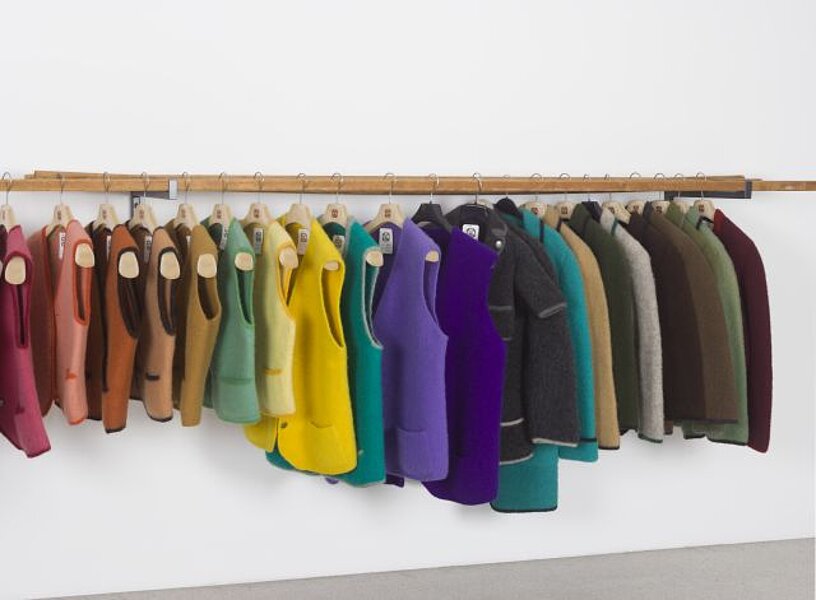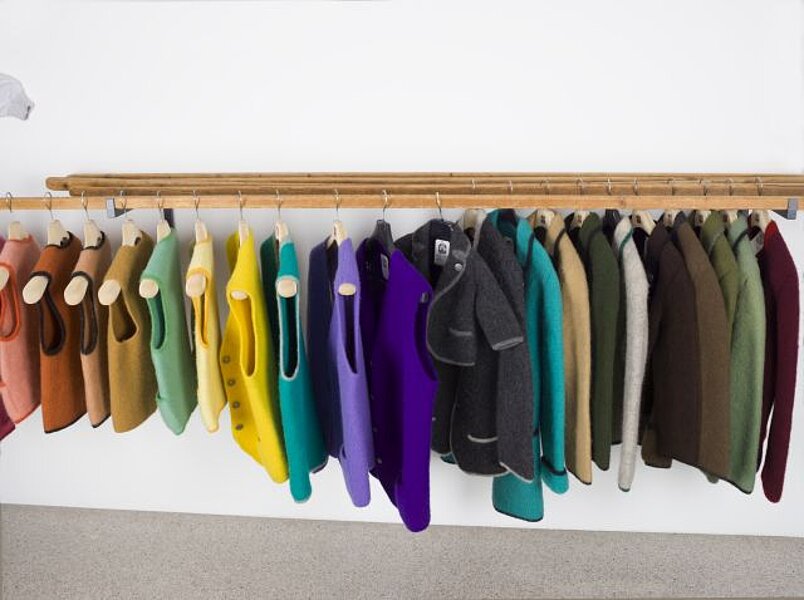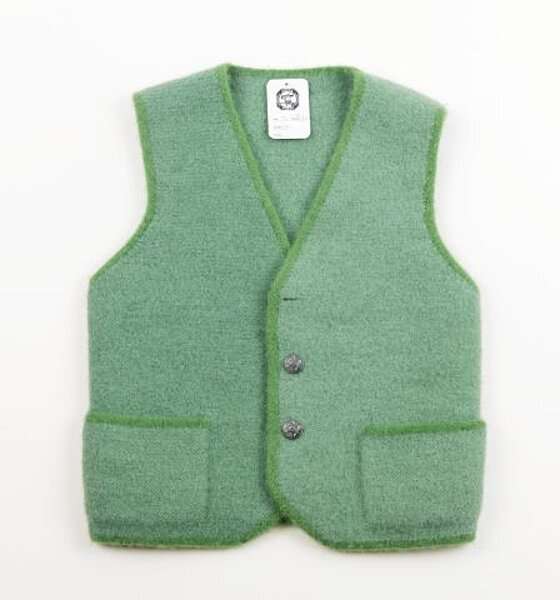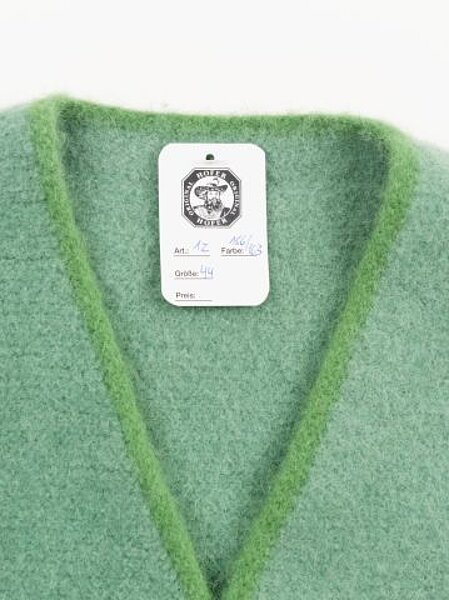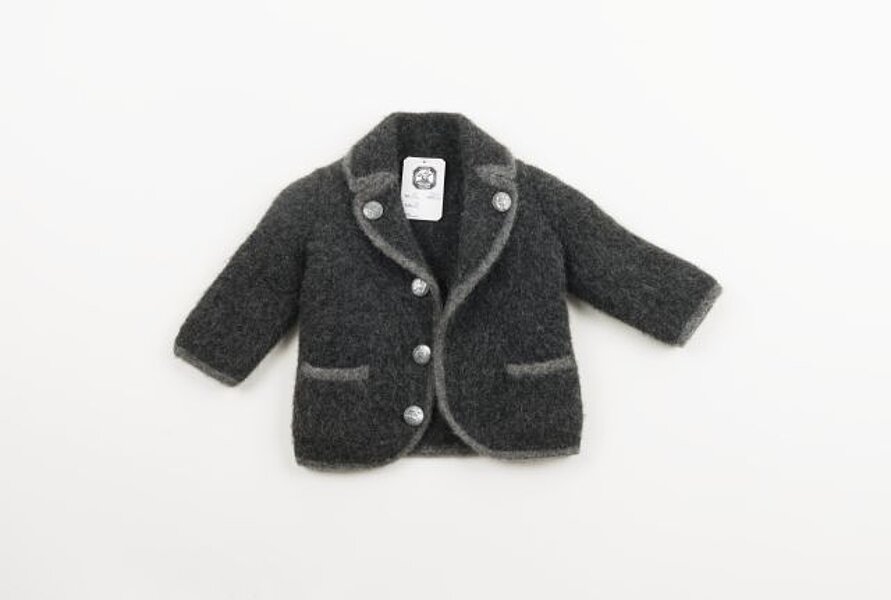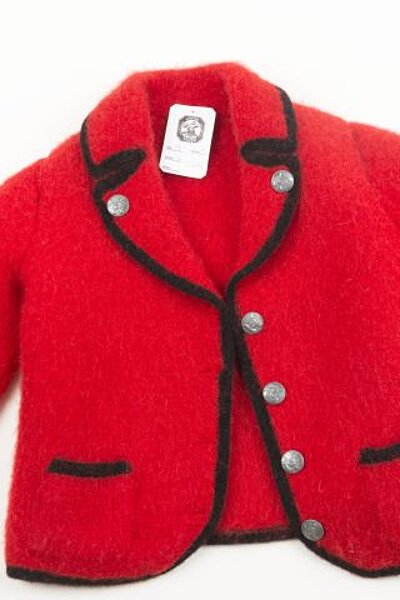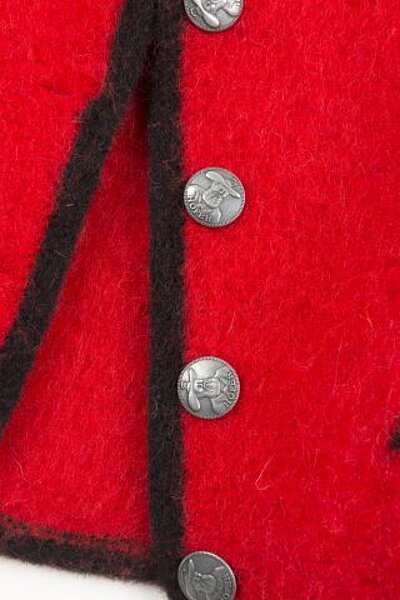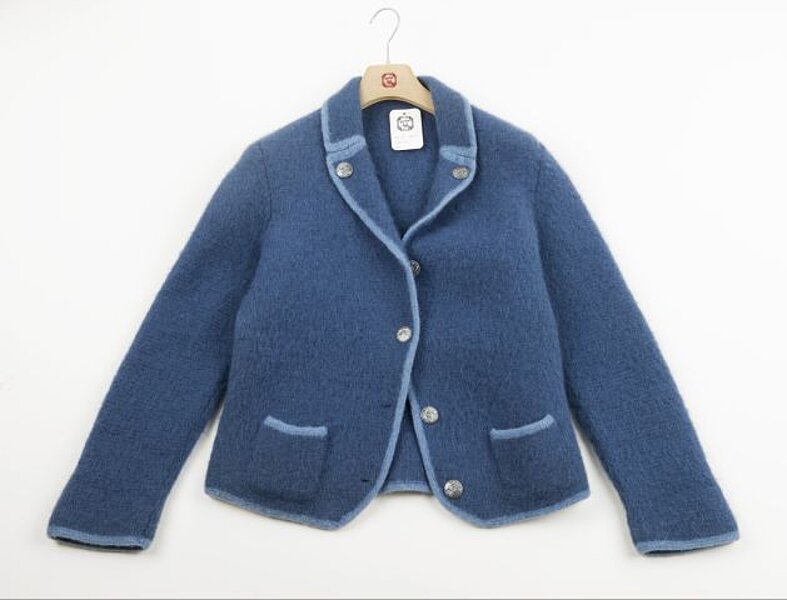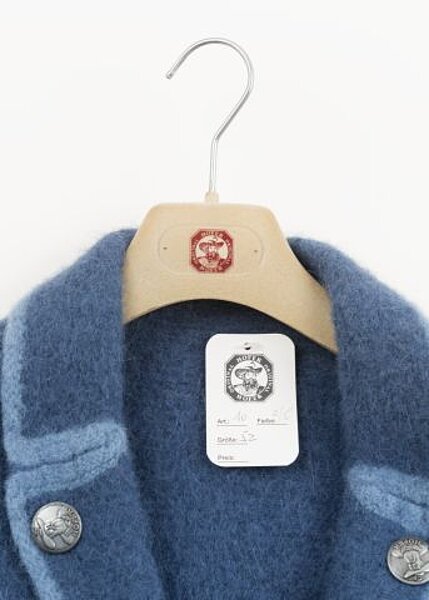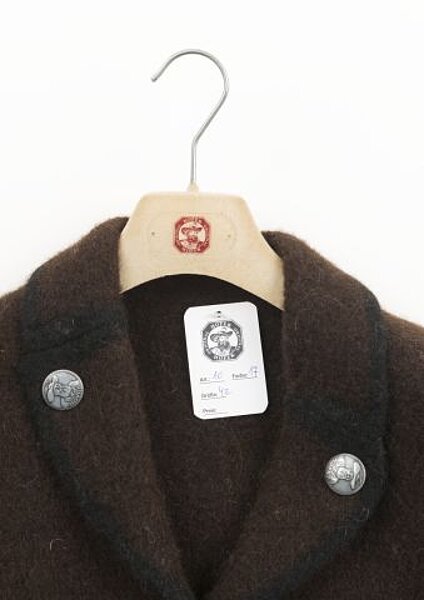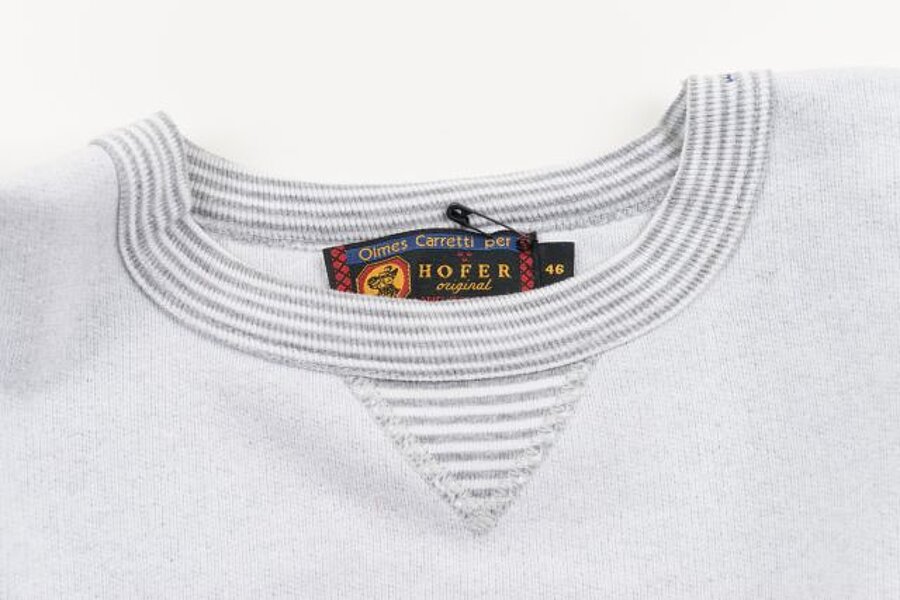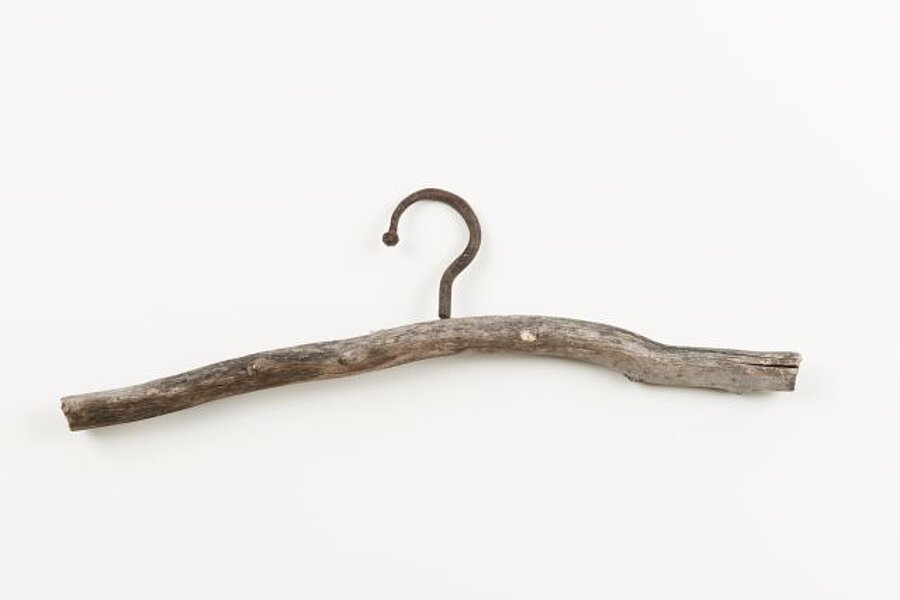mumok is closed until June 6, 2024 for renovation work.
All information about the renovation project and our alternative program can be found here.

Detail
Hofer, Kathi
Salzburger Walkjanker Hofer aus dem Pongau,
2016
| Object category | Allgemein |
|---|---|
| Object description | Boiled new wool, metal, wood, steel, plastic |
| Dimensions |
Objektmaß:
height: 130 cm,
width: 454 cm,
depth: 75 cm,
height: 4 cm,
width: 4 cm,
depth: 250 cm,
height: 4 cm,
width: 3,3 cm,
depth: 453 cm,
height: 3,9 cm,
width: 3,9 cm,
depth: 239 cm,
height: 3,7 cm,
width: 3,7 cm,
depth: 241 cm,
height: 33,3 cm,
width: 45 cm,
depth: 2,5 cm
|
| Inventory number | P 700/0 |
| Year of acquisition | 2016 |
| Creditline | mumok - Museum moderner Kunst Stiftung Ludwig Wien, erworben mit Unterstützung des BKA, Sektion Kunst |
| Rights reference | Hofer, Kathi |
| Further information | GND |
Kathi Hofer draws on her own family history and an Austrian fashion icon—the artist comes from the Salzburg Hofer family that, up to the year 2000, produced the Austrian clothing brand Walkjanker. The timeless elegance of these clothes survived trends and technological innovation for fifty years, and they were included in the portfolios of top fashion houses and magazines and worn by international stars—including actress Grace Kelly, the writer Ernest Hemingway, and the Paris fashion designer Kenzo. Drawing on the long tradition of the Hofer company, Kathi Hofer creates an updated formal language comprising reused materials, traditional knowhow, and inherited glamor. “A central idea of my project is the idea of recycling: the recycling of materials, processes, of knowhow, memories, of style and status” (Kathi Hofer). Hofer’s artistic materials are tools, production processes, display elements, sales accessories, and fashion photography from the heyday of the firm between the 1960s and the 1990s, all of which she combines to make her own new installation. Her gesture of appropriation refers to the complex social relations between people and objects.
© mumok – museum moderner kunst stiftung ludwig wien


